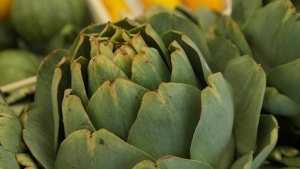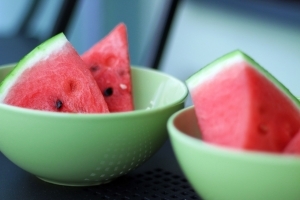Guacamole

Photo: La Latina
I still haven’t met a single person who doesn’t go nuts for guacamole. I personally eat guac on toast or a bagel for breakfast at least three times a week before working out. My guests say that my guacamole is exceptionally good. I just tell them, ‘I don’t really know why, except that it is made with lots of love.’ Here is my attempt to crack the code: it’s very, very simple as long as a few things are done right. Good avocados equal good guacamole. Always check for ripeness by gently pressing the avocado: it should be firm but with a little give, but it shouldn’t feel mushy. But go the extra mile for your perfect guac — once you’ve got a good avocado candidate, take a peak at what’s inside. Flick the dry stem off — if the fruit right under the stem is bright yellow-green, you have a winner; your avocado will be great. If all you see is brown under the stem, put it back because it will be brown inside.
Preparation: 10 minutes
Serves: 4
Ingredients
- 2 ripe avocados
- 1⁄2 red onion, peeled and diced (about 1⁄4 cup)
- 1 jalapeño, serrano or other chilli, minced (optional)
- 2 tbsp finely chopped coriander leaves, plus extra for garnish
- 1 tbsp fresh lime or lemon juice
- Coarse pink Himalayan salt (or flaky sea salt) to taste
Garnish
- 1 tbsp pomegranate seeds
- 1 tsp black sesame or toasted sesame seeds
Method
Halve the avocados. Remove seed and scoop flesh out, putting it in a mixing bowl. Using a fork, mash the avocado, adding some lemon juice to prevent oxidation. Add onion, chilli (if using), coriander and lime or lemon juice, and season with salt and freshly ground black pepper to taste. Keep the pomegranate and toasted sesame seeds separate until ready to serve. Just before serving, finish by garnishing with pomegranate and sesame seeds, some extra coriander leaves and coarse or flaky salt.
To prevent oxidation (browning), put the avocado stone in the middle of the guacamole. Acid also prevents oxidation, so feel free to add a thin layer of lemon or lime juice on top, folding this through just before serving.
If you need to refrigerate your guac (up to 2 days), put it in a bowl that has a tight-fitting lid. Pack the guacamole tightly in the bowl, pressing out any air bubbles. Dribble in some lukewarm water, making sure that the water covers the surface of the guacamole to about 1 cm deep. Put some plastic wrap directly over the guac, then put the lid on and refrigerate. When ready to eat, take the lid off and and gently pour out the water. Stir the guacamole to incorporate any extra moisture.
Chef’s note: Do not over-mash your guacamole; leave it a bit chunky. It will have more texture and better taste. Chillies vary individually in their hotness. Start with half of one, and taste. Be careful when handling chillies — wash your hands and do not rub your eyes! If it is not pomegranate season, you can substitute tomatoes in the guacamole. De-seed them first, or the guacamole will be watery.
Reproduced with permission from La Latina by Grace Ramirez


